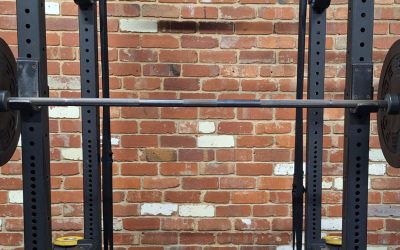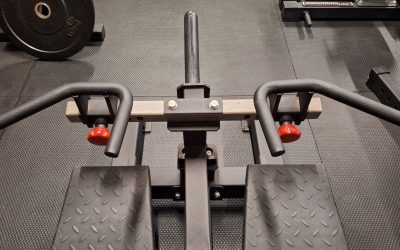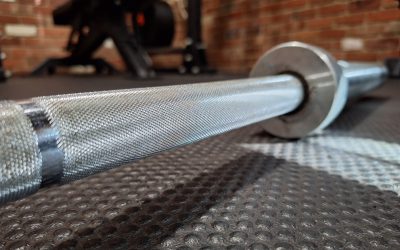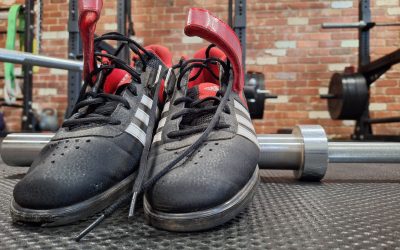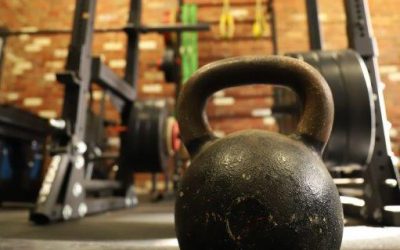Developing your posterior chain for strength benefits health, builds power and enhances athletic performance. A brilliant hinge exercise to incorporate into your program.
The posterior chain refers to the powerful group of muscles of the backside of your body. An area covering the back of your head towards your heels. The major muscles often referenced are the glutes, hamstrings, calves, lats, and erector spinae. Likewise, the rotator cuff muscles and latissimus dorsi can also be considered posterior. Developing your posterior chain for strength and power is important for overall sports performance, a sturdy posture, and injury prevention.
The dominant movement that works the chain is the hinge. A powerful movement pattern that develops an enormous level of strength. Therefore, with good programming can effectively transition to explosive strength. When working posterior chain muscles, its referred to as a body pull.
The posterior chain muscles can be trained within a traditional split program for general strength and muscle gain. Or worked as a whole chain with full body movement like the deadlift, kettlebell swings or power clean. Firstly. let’s look at some of the benefits of a strong and powerful chain. Secondly, suggest some exercises to perform. Lastly, recommend some full body movement that ensure you firstly build your strength base, then make the transition to explosive strength for athletic performance.
Benefits of developing your posterior chain muscles.
Certainly, working the posterior chain for strength, then muscular power is not the only return you receive when focusing on this area. There are many more benefits you receive also related to health and wellbeing. Firstly, is having a better posture with good alignment. A well-developed posterior chain helps maintain proper alignment and reduces the risk of back pain normally caused by imbalances to your frame. Secondly, and closely related is the enhanced stability and balance you feel. Back muscles (core) support the spine, pelvis and contribute to better stability and balance during daily tasks.
Lastly, with any weight training program not only will you gain strength, but the additional muscle will surround the joints and help with Injury Prevention. Strengthening the posterior chain makes you sturdier in absorbing impact, thus preventing common sports injuries. A strong chain supports your hamstring and lower back reducing the risk of injuries.
Moving onto more movement and sport benefits.
Essential in many sports is the ability to make quick changes in direction. A strong chain can be trained for Improved agility. Once its conditioned, can deal with the training workload to further develop. Above all, when training your posterior chain for strength and explosives is an Increased in power along with an improvement with speed. Muscles, including the glutes, hamstrings, and lower back, are essential for explosive movements like sprinting, jumping and lifting. These can have an impressive carry over to sports performance.
So, let’s have a look at the exercises to strengthen the Posterior chain.
Effective exercises developing the posterior chain for strength.
Incorporating hip hinge exercises into your training routine achieves great results. With consistency with a good program, you will build a stronger and more balanced body. Use these exercises for real gains.
The classic deadlift is undeniably the dominant exercise in building the chain. A great all-rounder demanding focus and commitment. It primarily targets the lower back, glutes, and hamstrings. In addition to the recruitment of other muscles, when proper form and tension is applied the Lats, rhomboids, erector spinae, core and traps all contribute. For those who want a stronger grip, look no further. Lastly is the engagement of the arms and adductors (inner thighs).
Another strength builder to this area is the Romanian deadlift. It mainly focuses on the hamstrings, quadriceps, lower back and glutes. It can be performed best with heavier weights preferably off block or inside a power cage. A shortened range compared to the deadlift that is used to strengthen the second phase of an Olympic lifts like snatch and clean. An excellent hinge option.
A great bodyweight version are the glute ham raises. Brilliantly targeting the hamstrings and glutes. I’m fortunate to have one of these and will add calf recruitment. With its great midline stabilisation set up it hits the hamstrings better than leg curls. Great exercise to alternate with deadlifts or kettlebell swings.
A popular one with my female clients are hip thrusts. A great extension movement to do for glute activation and strength. The primary movers in the hip thrust are the gluteus maximus and hamstrings Assisting muscles include the adductors, gluteus medius, and gluteus minimus.
Designed by the late Louie Simmons. An unusual one that’s getting popular are reverse hypers. It develops explosive speed and is effective in relieving lower back and glute tension.
Transitioning your base of strength to explosive strength (power)
Once you have a solid base of strength, then converting that strength to power is the next step. As an active trail runner and cyclist my go to movement are the kettlebell swings. The are efficient, deliver an excellent cardio response and condition my posterior chain well. Swings on their own can build hip conditioning. However, when following up a good deadlift session you quickly realise why this simple tool is an effective power developer.
For some serious posterior explosiveness look no further than the Olympic lifts. The power clean is an explosive all over body builder used by athletes and weightlifters for the benefits that it brings. It’s an easier version to teach and has excellent carryover effects for power sports. A staple for most team athletes and popular with track runners. It works you hamstrings, quads, glutes, calves, shoulders and core.
Next is the popular power snatch. A great exercise that develops leg drive and hip power. The power snatch is started from the floor and received overhead in a partial squat. A great choice in the development of your posterior chain, total body power and teaches the body to recruit maximum muscle fibres.
Generally, for pure strength using the following systems works well. 3×3, 5×3, and 5×5 sets and rep range.
Posterior chain for strength, power and health.
In summary, when looking at developing your posterior chain your gains will include greater strength, better mobility and structural health. An essential hinge movement covering the back part of your body. When worked for strength using compound exercises develop enormous strength.
In addition. For sports performance using the explosive Olympic lifts is a must. The all-round body engagement from these power full lifts is second to none.
Lastly, the undeniable health and wellbeing benefits from working your posterior chain for strength results in you having better posture, enhanced stability and balance. Most importantly, injury prevention. Collectively all these elements are a good reason to incorporate working this area for all round strength and health. Remember, always use good form and choose the appropriate loading when performing any hinge movement.

